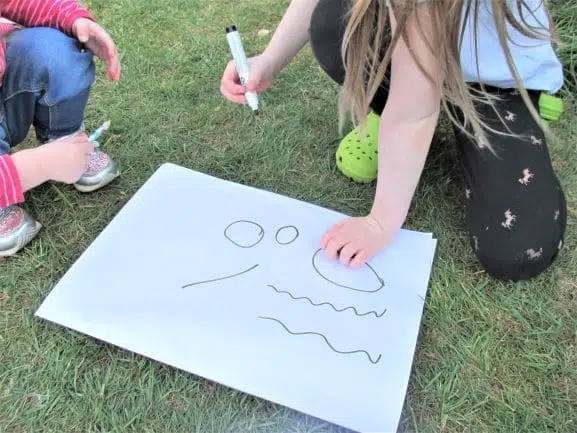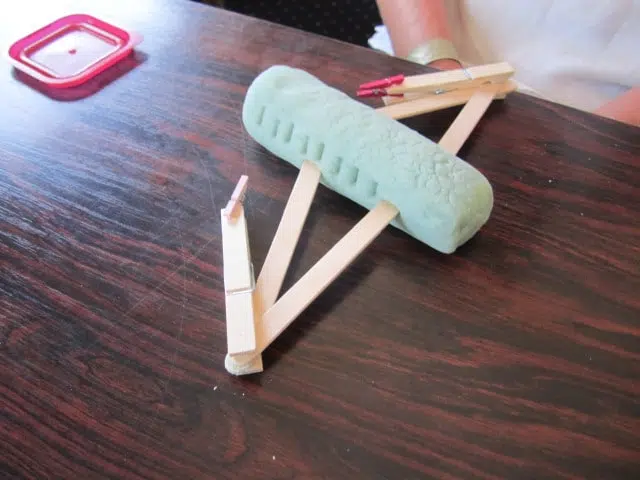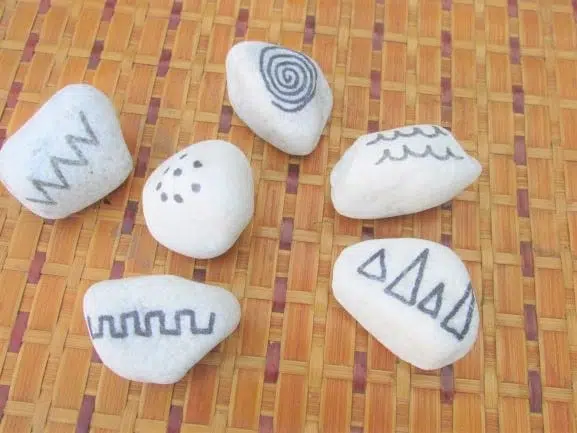Your pre-schooler hates writing? Honestly, this is completely natural, and most researchers would even say normal. At this age many children are not ready physically to attempt mark-making, and starting them too quickly can sometimes do more harm than good.
Having said this, there are some things you can do to speed along the process of getting them ready to mark-make, and also to make the whole thing seem organic, fun and stress free.
The best way to develop a child’s readiness for writing is to help them develop their gross motor skills, and then their fine motor. Also tapping into children’s interests in fine motor and simple mark-making activities can motivate them to at least try writing.
The important thing is not to panic! This is normal. If your child hates writing now, this does not mean they will hate it forever. In a year or two years they may love it, but not if they are put off forever now.
I know there are lots of issues. Why does a child hate writing? What can we do to help? What process do you follow? How will this continue in the future?
This article will answer all of these questions for you.

Why Do Many Preschoolers Hate Writing?
The simple fact is that their bodies are often not ready to do it. The muscles in their hands have not developed to a point where writing is pain-free, and coordinated.
Also, writing is a thing that they don’t see related to their lives. Making writing ‘real’ is another big barrier.
Many pre-schoolers find many of the following issues:
- It hurts their hand to write. This is probably the biggest issue
- They don’t want to do it! Why would they, when there are so many exciting opportunities all round them, like construction, outside play, playdough, role-play and so many more things
- It is unconnected to their lives. Many children see it as abstract or pointless.
- They see others are far better at it than them. Some children develop their physical skills more quickly, and this is plain to see. Please remember, though, it is like the tortoise and the hare. Developing skills more early does not mean this level of speed in attainment will continue later on.
- They have not yet developed the level of coordination required to be able to try it out with a level of success. Children’s hands develop and change quite rapidly from birth to at least 7. There are changes in the muscles, bones – the whole hand! This has a huge impact, and really shouldn’t be rushed.
OK, so we’ve outlined what the issues are. It could be one, or, more likely, a mixture of many of the above.
But what’s the best thing to do about it?
Develop Gross Motor Skills
The crucial foundation on which writing is later built are a child’s gross motor skills. These are simply defined as large movements that children make with their arms and legs, or their entire body. If you want to find out the 12 key differences between fine and gross motor skills then take a look at this article that I wrote about it.
In particular the gross motor skills that are important for writing (later on) are movements of the hands, wrists, arms, and shoulders. Also the muscles in the core (stomach area) are surprisingly important as well.
There is a sequence – develop gross motor – develop fine motor – write.
Without one link in the chain, the whole thing is at least slowed down, if not permanently derailed.
So what are some good gross motor skills to get children doing? Well, basically anything that develops strength and coordination in the arms and core. Some examples would be:
1.Digging
This could be done in lots of ways. Children love digging in sand with spades, or digging in soil or mud. They could sometimes have a purpose like digging weeds or planting, but often just unstructured digging is the best way to go. Children will find their own purpose and reason for doing it.
2.Building With Large Construction Equipment
This could be things such as large wooden blocks, crates, planks, tubes, pipes, and other things like that. There are many large-scale outdoor loose parts activities that you can try out that are brilliant for gross motor skills.

3.Brushing And Sweeping
This can take on many guises. Many children love sweeping the floor. Lots of them enjoy washing things, using large paint brushes with buckets of water. You could set up a ‘car-wash’ where they wash vehicles, or paint the fence.
4.Climbing
Any either natural or man-made climbing equipment is great here. Children can climb logs, rocks, up hills, up trees, or up climbing frames.
5.Ball Games
Both structured and unstructured play with balls really focusses on the arms and core, and will involve all sort of coordinated movements to throw, catch, roll, and bounce. You can find my full guide to the 30 best ball games for preschoolers here.
These are just five examples, and there are definitely lots more things you could try out as well. Luckily, all of these things are fun! Children want to do them, and they should be doing them – so it really is a win-win.
When children have developed some level of confidence with these, the next step is fine motor…
Develop Fine Motor Skills
Fine motor skills are smaller movements of the hands and fingers.
The big thing with fine motor is interest! Get the children’s curiosity and they will become so engrossed in what they are doing they will reach that state of ‘flow’ where high-quality learning is happening.
1. Use Characters That They Like
The more interest they have, the much higher chance they will give it a go. Examples could be:
- Wrapping up a baddy with string as a fun weaving activity
- Making webs for spiderman. They can do this using string, straws, lolly (popsicle sticks) and many other resources. Basically criss cross loads of straws or sticks and you make a web
2.Use Play Resources They Enjoy
If they really like playing with something anyway, then the more fine motor skills you can add to the experience the better. For example:
- If they like painting, then try painting with smaller brushes, or making marks different objects
- If they like playdough, then add a range of small objects and loose parts for them to build and construct with
- Give them little fine motor challenges in different areas, for making pirate ships out of playdough and clothes pegs.

3. Use Games
It is great to add a bit of competition for most children. For example, you can:
- See how many pompoms you can pick up in 30 seconds and put in a container
- How tall can you build a tower of blocks in a time limit
- How long can you roll a playdough ‘snake’
Early Mark-Making Activities
When children have developed at least some level of fine motor ability, the way to entice them into mark-making is to tap into their interests.
Also, it is good for them to see mark-making modelled regularly in a range of contexts.
1.Use Mark-Making Lines
These lines are things like zig-zags, circles, dots, lines, and other simple marks that it is easy to try to copy. Never start with letters.
You could put mark-making lines on all sorts of different things for them to try to copy, such as:
- Stones
- Shells
- In shaving gel, or porridge oats
- Make mark-making lines using loose parts
- Make lines in the sand using cars or trains. You can stick pens to vehicles with tape and drive them around on big paper.

Check out stones with mark-making lines on such as the ones above in my essential guide to story stones.
2.Using Exciting Mark-Making Tools
Giving them enticing things to write with can be very motivating. Some good examples could be things like:
- Painting with carrot sticks or feathers
- Superhero invisible pens!
- Sticks with things stuck onto them such as ferns, leaves, or
- Pens with superhero characters or footballers faces stuck to the top
3. Make It Big
Think big surfaces for mark-making, such as:
- Huge wallpaper on the floor with big pens
- Chalks on the floor outside
- Large blackboards
- Paint big surfaces with chalkboard paint, such as fences, sheds or tables
- Put paper underneath tables and get them to mark-make on that
4.Tap Into Their Interests
This is one of the most important ways of motivating children in any area. To find out the top 15 ways to motivate preschoolers then take a look at this.
Some examples of using children’s interests for mark-making could be:
- Making a track for a train
- Stick a pen to a T-Rex and stomp it round
- Secret superhero writing in a dark den
- Encourage them to draw pictures. Research suggests the strong link between writing and drawing. (Source)
Top-Tips For Preschoolers That Hate Writing
- Don’t panic – it is natural!
- Concentrate first on gross motor, then fine motor, then mark-making – in that order!
- Tap into their interests
- Provide stimulating fine motor activities
- Get them mark-making in imaginative ways
READ MORE
